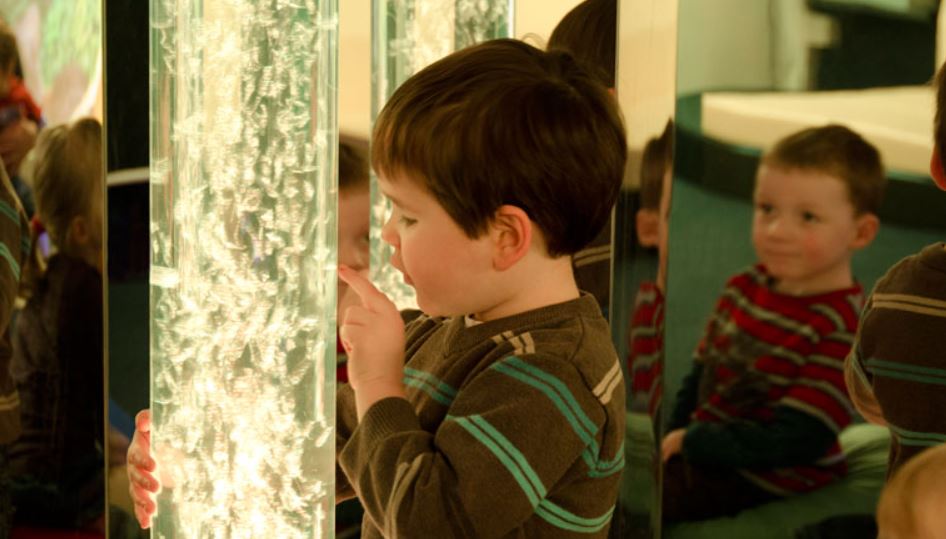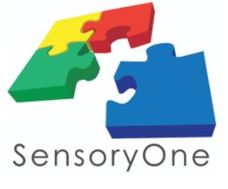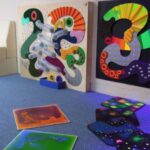
If you have a relationship with a child or children with autism, you may have noticed that they generally struggle to find comfort in the busy world in which we live. Autistic people tend to process sensory information differently than neuro-typical people do, so they likely need more support to thrive in their day-to-day activities.
One great way to support children with autism is to create a sensory room or space for them to spend time in when they feel the need. Such rooms can help kids take a break from the overstimulation they may experience and, instead, be able to decompress in an area that supports their needs.
What is a sensory room?
For children with autism, the world can be an intimidating and anxiety-inducing place. A sensory room is a space that has been designed with this in mind to help calm kids, reducing their anxiety and improving their focus.
A sensory space can be set up as its own room, or occupy just a corner or any part of a bigger room. The important thing is that the area can be separated so that the children using it are able to detach from other things happening in the room.
The benefits of a sensory room
If you have a child with autism in your life, there are many benefits to making space for a specialized sensory room to create a safe and comfortable space for your child. Among the benefits:
At SensoryOne, our strength is more than supplying sensory equipment throughout the United States and Canada. We collaborate and design sensory rooms with clients, ensuring optimal design for environments built with autistic children in mind. Call us with your questions today!
1. Allows therapy to remain consistent
By creating a sensory room at home or at school, you help ensure that your child’s therapy will stay consistent, regardless of where they are. When kids have access to the same soothing methods and occupational therapies in places where they spend most of their time, they will feel the benefits without having to wait for an appointment.
2. Therapy can be personalized
Sensory rooms typically involve a number of different toys, tools and features. This means that one room can be used by several different children, and yet they will all be able to make use of personalized and individualized therapies.
3. Give your child control of their situation
A child with autism may feel powerless in many situations, so having a sensory room to escape to can help to reduce their anxiety and increase their focus.
What to include in your sensory room
Every child is going to have different needs when it comes to finding solace in a sensory room. Some kids will want a quiet and calming space, while others may want a space with things they can touch and feel.
The ideas suggested here are only a starting point. It’s always worthwhile to speak to your child’s therapist to get some ideas as well.
Tactile toys
Tactile items, such as bouncy balls, rubber bands, pop-its and slime toys, encourage kids to touch, play, experiment and learn, making them worthy to include in a sensory room. Some autistic kids love the repetition that these toys offer, as well.
Tools that encourage movement
Rope swings, exercise balls, mini-trampolines, small ball pits, tunnels, ramps and rocking chairs can be great ways for children to get moving. Some autistic children use movement to help work out some of their anxiety.
The right lighting
A sensory space should be relaxing and not overly stimulating. Lighting will play a large role in creating such an environment. Include warm, soft lighting that incorporates fibre optic glow kits, curtains, cascades and light panels, to name a few. Of course, Christmas lights, battery-powered candles, lava lights and bubble tubes can change the atmosphere.
Interactive spaces
To help autistic children immerse themselves in tasks, and leave their anxiety at the door, it’s a good idea to include interactive items, such as puzzles, tactile floors and murals, and advanced technological tools, including motion-activated projection systems and immersive virtual reality systems.
The OMI interactive motion-activated projection system offers its Autism Suite package of more than 200 applications specifically targeted to those with Autism Spectrum Disorder. The BroomX MK360 is the only fully mobile, all-in-one VR unit, offering immersive experiences previously unattainable without headsets.
A comfortable crash space
While some children need activities and toys that gently stimulate them, others may need an area where they can relax and decompress. A corner with pillows, cushions, stuffed animals, and weighted blankets can be just the ticket.
Fresh activities
Rather than filling the room with all of the toys and activities that you can think of, consider putting some items aside and then changing it up every few visits. This may not work for all children, but many will thrive on the ability to try something new on a regular basis, rather than face information overload if they see everything all at once each visit.
Sensory rooms will support autistic children in your setting
Whether in a school or other educational setting, or as part of a health care environment, a multi-sensory space may be a missing element in your institution. The positive effects that sensory rooms can have on children with autism are many, and supported by research and experience. Gaining an understanding of how to create the right environment is readily had by contacting multisensory room environment specialists, as well as referring to other institutions that have implemented such spaces.



